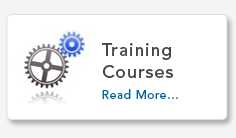Within the context of Expectra OBM™, Human Risk Management is the Managing of a Safe Human Behaviour process (SHB), Human error and Consequences of behavior.
A basic SHB model looks as follows:

Human Error:
Human error simply recognises the fact that human error is inevitable, and it requires some form of human error management. At the same time, the underlying principle of human error management is based on the view that Human Error is a consequence, rather than a cause of incidents. This changes the whole context of the approach, i.e., it recognises that people do make mistakes, but that these mistakes or violations are not necessarily the result of negligence – thus a culture of seeking the answer to the question, “why did the human failure or mistake take place” should be asked in an effort to identify the actual or root causes of the incidents.
The main message is that if it is not negligence, chances are that something else cased the unacceptable behaviour. Your duty as a manager is to identify these root causes, which more often than not, lies embedded (and hidden/latent) in the organisational systems and processes.
Consequence Management:
Why, when this term is used, everyone immediately assumes disciplinary action? It is a reflection of how we understand and use “consequence management” – a tool used to discipline people who are out of line? Consequence Management can be split into 2 major categories, the negative/punitive reinforcement as well as the often neglected or ignored “positive” reinforcement.
Positive reinforcement – If we do something well, we get rewarded. Important points to remember about positive reinforcement include:
- It must always increase desired behaviour;
- The worker perform to receive a positive consequence;
- The worker may perform far beyond minimum standards – discretionary effort;
- The focus is in excellence – it’s success-based strategy;
- If you report a hazard you’ll be recognized in a positive way;
- If you prevent an injury or save money you will be rewarded.
Negative reinforcement – If we do something well, we don’t get punished. Elements of negative reinforcement include:
- The worker performs to avoid the consequence – nothing else;
- The intent is not to increase desired behaviours;
- The worker performs to minimum standard- just enough to get by;
- The focus is on compliance – it’s a fear-based strategy;
- “If you break a safety rule, you’ll be fired”;
- “If you comply with safety rules, you won’t be reprimanded.”









